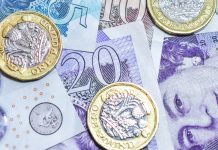- Pound (GBP) rose as inflation rises to a 29-year high & WFH order ends
- PM Boris Johnson’s future is still uncertain
- Euro (EUR) remains strong as inflation stays elevated
- German PPI and Eurozone CPI due
The Pound Euro (GBP/EUR) exchange rate is edging higher on Thursday, adding to gains in the previous session. The pair rose + 0.04% on Wednesday, settling at €1.2004, after rising as much as €1.2030 a fresh 23 month high earlier in the session. At 05:45 UTC, GBP/EUR trades +0.05% at €1.20.
The Pound moved higher in early trade yesterday after UK inflation surged to an almost 30 year high in December. According to the Office of National Statistics inflation, as measured by the consumer price index surged to 5.4% year on year in December. The was up significantly from November’s 5.1% and was also well ahead of forecasts of 5.2%.
The strong inflation data comes after jobs data earlier in the week revealed that unemployment in the UK dropped to the lowest level since the start of the pandemic.
The upbeat data across the week so far is supportive of the BoE raising interest rates in the February meeting.
Adding to the positive tone surrounding the Pound Boris Johnson announced the end of work from home restrictions and plan B, as Omicron cases fall.
However, Pound gains are being offset by political uncertainty as Boris Johnson’s days as Prime Minister could be numbered. It is unclear how many letters of no confidence have been received. Should the number reach 54 then Boris Johnson’s future could be voted on.
The Euro showed resilience in the previous session after data confirmed that German inflation rose to 5.3% in December, the highest level since 1993. The news sent the German 10-year Bund yield to 0.025% the highest level in over three years. The euro found support from higher yields.
Looking ahead, German wholesale inflation and eurozone consumer price inflation are expected to be in focus. Eurozone CPI is expected to confirm the pre-liminary reading for December of 5%.





